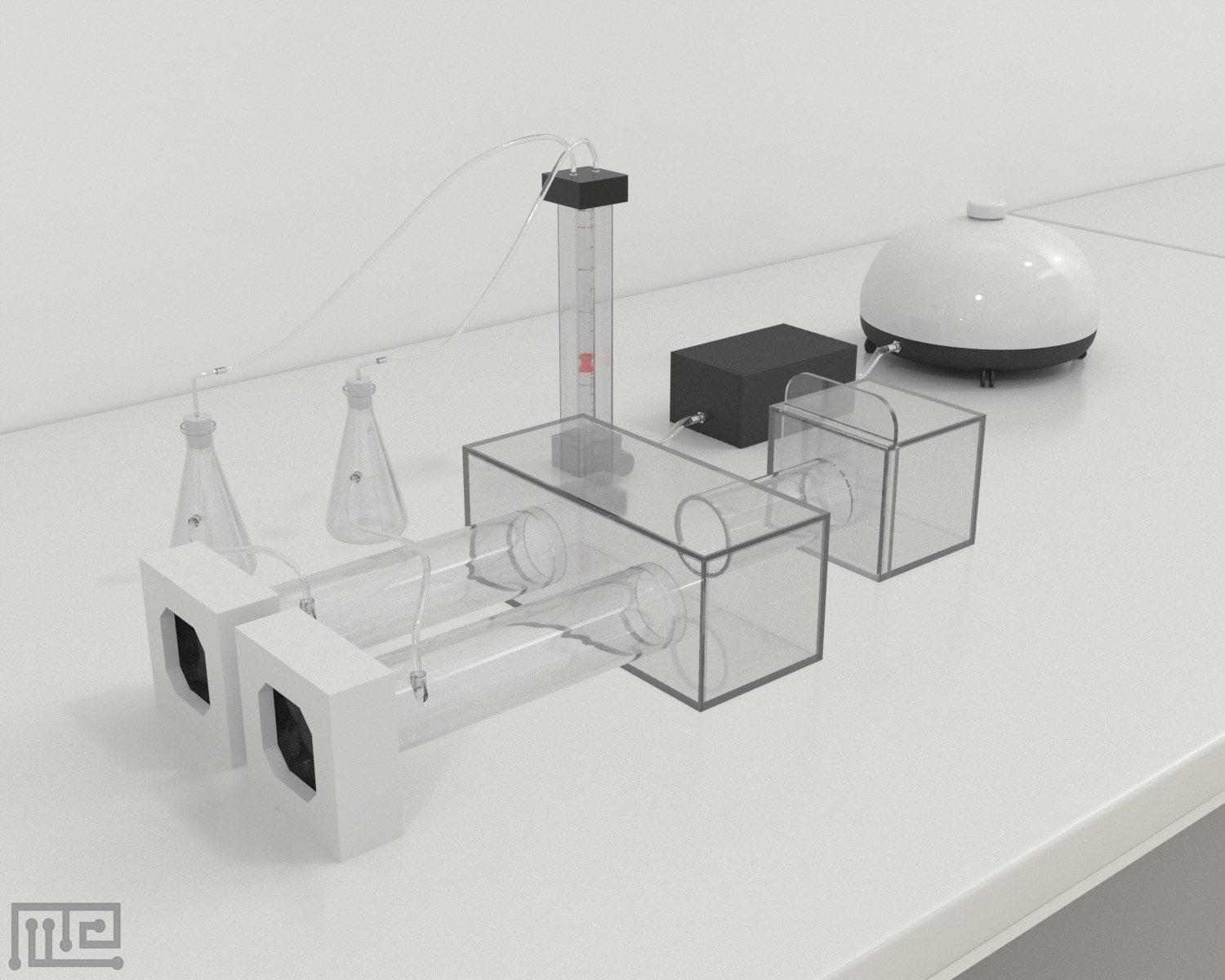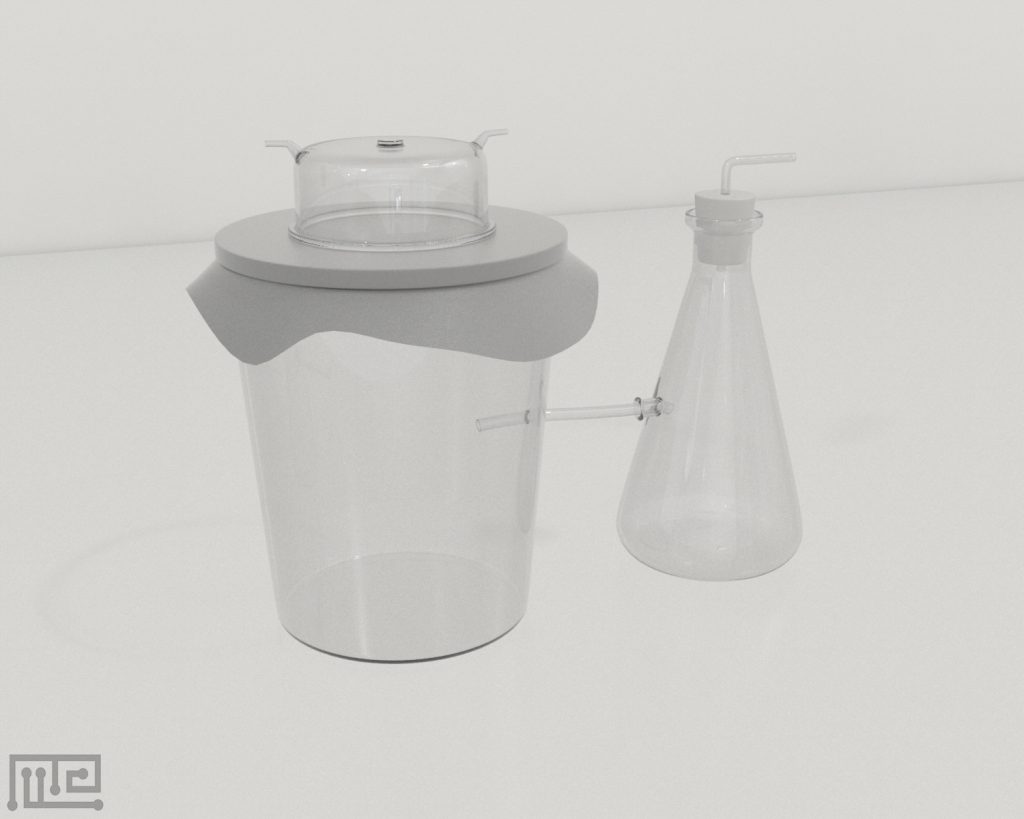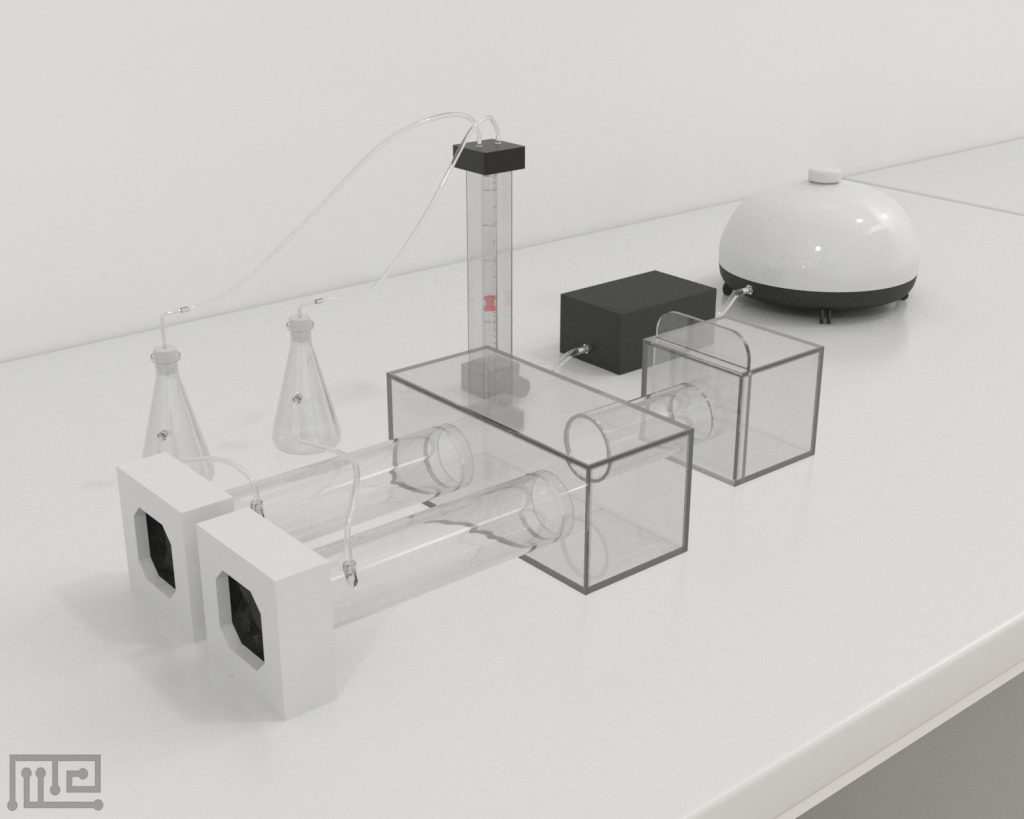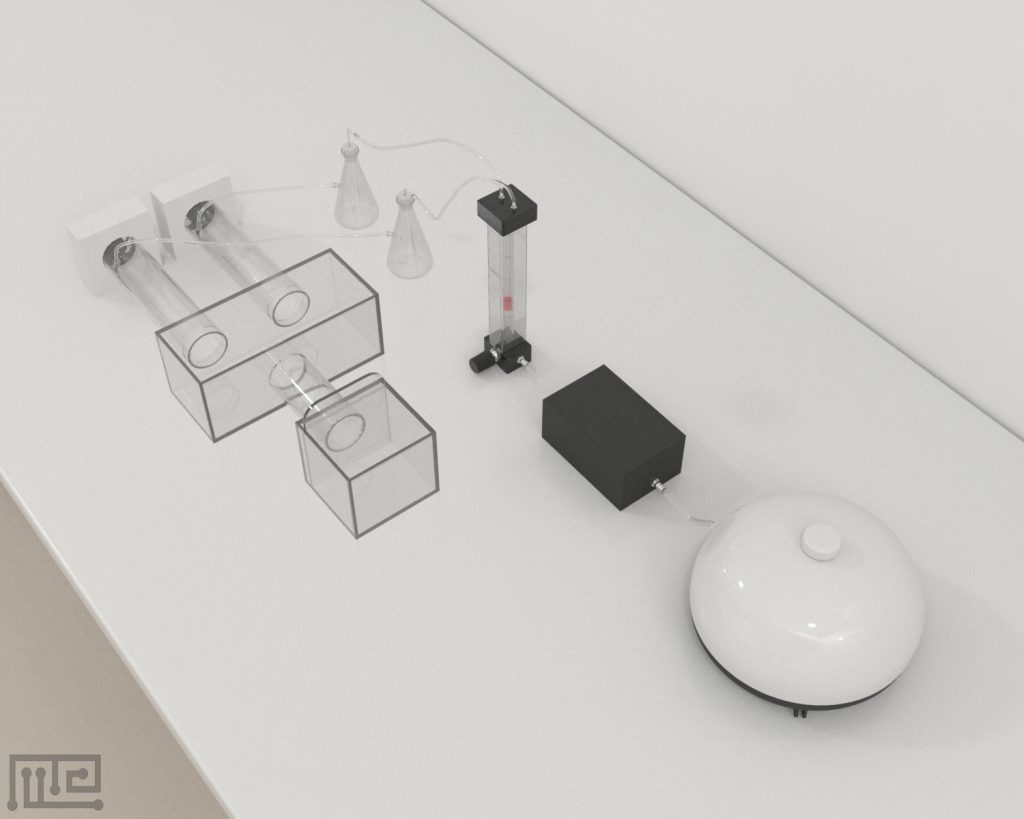The Mosquito Olfactory Apparatus was used to assess olfactory learning and memory in the disease vector mosquito in an experiment.
It consists of an artificial feeder used in the appetitive conditioning procedure, plastic insect container, glass bottle containing the condition stimulus, connected to an air pump via silicone tubing, glass artificial feeder, silicone tubing conducting warm water (37°C) from a water bath to the artificial feeder.
It also consisted of a miniaturized photoionization detector (miniPID) characterisation of the stimulus delivery, using a low molecular weight volatile (ethanol) as a tracer. The probe of the miniPID was positioned at the junction between the central box and the olfactometer arms.
Mazeengineers offers the Mosquito Olfactory Apparatus.
Price & Dimensions
Mosquito Olfactory Apparatus
$ 1990
+S&HOlfactory Maze- Start arm and two choice arms (110 cm length, 10 cm internal diameter)
- Release cage (10 cm length x 15 cm width x 12 cm height)
- Box to connect choice arms to start arm (11 cm height 30 cm width 21 cm length)
- Glass bottle connected to each choice arm via Teflon tubing (3 mm internal diameter)
Artificial glass feeder
- Containment cylinder (3.8cm internal diameter, 6cm height)
Documentation
Introduction
The Mosquito Olfactory Maze is a behavioral apparatus used to understand learning and memory in mosquitoes. The mosquitoes seek the host for blood reward by utilizing their previous foraging experience (McCall, & Kelly, 2002). They learn from the previous experience about the signals to be avoided and which signals are to be learned to select the best host (Vinauger, Lutz, & Riffell, 2014). It is known that mosquitoes use olfactory cues from the host to learn and remember the best hosts (Guerenstein & Lazzari, 2009)
The Mosquito Olfactory Apparatus is developed to understand the role of olfactory cues in the learning and foraging behavior of mosquitoes. The maze consists of an artificial mosquito feeder and a Y-shaped olfactometer with two choice arms. The subjects can be trained individually or in a group in the artificial feeder for a conditioned olfactory stimulus. The mosquito olfactory task is then performed in which subjects choose to enter the arm with odor based on its learning during training (Vinauger, Lutz, & Riffell, 2014). The Mosquito Olfactory Maze task is easy to perform and requires minimum time. The Mosquito Olfactory Maze can be effectively used to understand foraging behavior in mosquitoes.
Other apparatuses to study the role of odor stimuli in other animals’ learning behavior include the Olfactory Hole Board, the Predator Odor Exposure Test, and the Odor Span Test.
Apparatus and Equipment
The Mosquito Olfactory Maze consists of two parts: an artificial mosquito feeder and an olfactometer. The artificial mosquito feeder is composed of a mosquito glass container attached to a glass bottle (20 ml). The glass bottle is connected with a volatile-delivery system through a silicone tube (3 mm internal diameter). Above the glass container, there is an artificial glass feeder (3.8 cm internal diameter, 6 cm height) connected with silicone tubing (3 mm internal diameter ) to conduct warm water to the artificial feeder. The bottom of the artificial feeder is covered with plastic film. The olfactometer consists of a bounded Y maze having a start arm with two choice arms (110 cm long, 10 cm internal diameter) made of acrylic. The start arm is attached to a start chamber, which is separated by an acrylic door. The proximal side of the two choice arms is provided with fans to maintain airflow. Air filters and mesh screens are also provided to develop a laminar flow of the air. Each choice arm is connected with a glass bottle through a Teflon tubing (3 mm internal diameter). The tubings are placed in the center of the arms and 5 cm away from the fans. The glass bottles are further connected with a flowmeter having a needle valve, charcoal filter, and an air pump to maintain airflow.
Task Performance
Thoroughly clean the apparatus. Properly lit the apparatus. Carry out a task in a well-ventilated room to avoid any accumulation of olfactory cues. Randomize the position of choice arms and fans to avoid environmental bias. The Noldus EthovisionX can be used to assist with recordings and observations.
Training Protocol
Conduct training in the artificial feeder. Before the individual training session begins, provide a clear air current in the mosquito glass container and place the mosquito in it. Allow it to acclimatize for 1 min. Now provide the airflow loaded with odor stimuli to the container for 2 min and then place the artificial feeder above the glass container for further 2 mins. The subjects will start landing on the mesh and start biting the membrane of the artificial feeder. Allow the subjects to feed for 20 s and then remove the artificial feeder from the container. Conduct two trials with an intertrial interval of 20 mins.
For group training, spread the odor in the mosquito glass container for 2 mins. Now expose the group to the blood feeder for 20 min while distributing the odor stimuli. The mosquitoes will start landing on the mesh and feed on the blood provided in the artificial feeder. After 20 mins, remove the artificial feeder from the container.
The Mosquito Olfactory Task
Place the odor stimuli in one of the olfactometer bottles and the other bottle with clean air and switch on the air pump. Place the subject in the starting chamber. Allow the subject to acclimatize for 30 sec. Open the acrylic door and allow the subject to move towards the start arm and choose between two choice arms, which are provided with odor stimuli and air.
Literature Review
Investigation of olfactory learning in Aedes Aegypti mosquitoes
Vinauger, Lutz, & Riffell (2014) investigated the role of olfactory stimuli in searching for the blood meal in A. aegypti mosquitoes. The study was composed of three groups; the control group, untrained, and trained mosquitoes. A Mosquito Olfactory Maze was utilized for training and task performance. The individual and group training sessions were conducted; mosquitoes were exposed to conditional stimuli, which was paired with a blood reward. The heat was used as an unconditional stimulus to induce blood-feeding responses in mosquitoes. The results of the individual training sessions revealed that only two feeding trials were enough for A. aegypti to create new memories, which will stay for at least 24 hrs. Trained mosquitoes were able to create an association between the conditional stimuli (L-lactic acid ) and unconditional stimuli and retain them for 24 hrs. The results of the group training experiments to the L-lactic acid revealed that individually tested mosquitoes but group-trained performed similarly to individually trained subjects. It was observed that different odors could not be used as conditional stimuli. L-lactic acid and 1-octen-3-ol were observed to be associated with obtaining blood meal while not being innately attractant, while the inverse was observed of innately aversive odors. The study concluded that learning is a vital factor in odor responses in the A. aegypti
Data Analysis
- The proportion of subjects who choose the test arm
- The proportion of subjects who choose choice arm
- Pi index
- Average flight speed
Strengths and Limitations
Strengths
The Mosquito Olfactory Maze task is easy to perform and requires minimum time. Only two trials are enough to develop the memory of mosquitoes for the odor stimuli exposed in training. The apparatus doesn’t require multiple pieces of training and testing protocols. The acrylic door between the start arm and start chamber can allow for acclimatization of the subject resulting in less stress on the subjects.
Limitations
The presence of surrounding olfactory stimuli may alter task performance. Improper handling of subjects may cause stress to the subjects.
Summary
- The Mosquito Olfactory Maze is a behavioral apparatus to understand learning and memory in mosquitoes.
- It consists of an artificial mosquito feeder and a Y-shaped olfactometer with one start arm and two choice arms.
- The subject can be trained on the artificial mosquito feeder and then tested for their ability to learn the odor stimuli and chose the arm with odor stimuli based on previous training.
- The Mosquito Olfactory Maze task is easy to perform and requires minimum time.
- The mosquito olfactory maze is very effective in understanding olfactory stimuli’ role in the foraging behavior of mosquitoes.
References
- Guerenstein, P. G., & Lazzari, C. R. (2009). Host-seeking: How triatomines acquire and make use of information to find blood. Acta tropica, 110(2-3), 148–158. https://doi.org/10.1016/j.actatropica.2008.09.019
- Vinauger, C., Lutz, E. K., & Riffell, J. A. (2014). Olfactory learning and memory in the disease vector mosquito Aedes aegypti. The Journal of experimental biology, 217(Pt 13), 2321–2330. https://doi.org/10.1242/jeb.101279
- McCall, P. J., & Kelly, D. W. (2002). Learning and memory in disease vectors. Trends in parasitology, 18(10), 429–433. https://doi.org/10.1016/s1471-4922(02)02370-x
Request a quote
"*" indicates required fields





